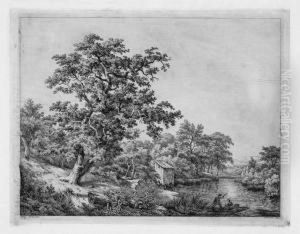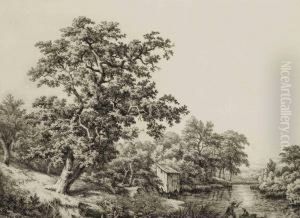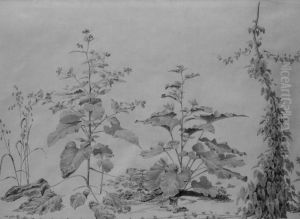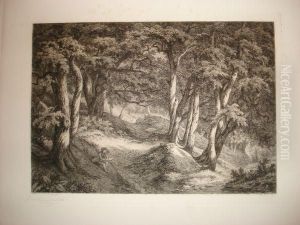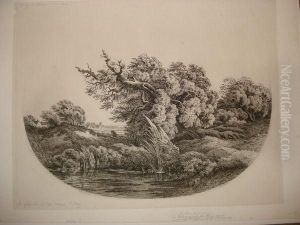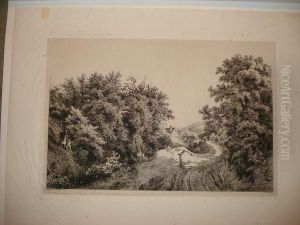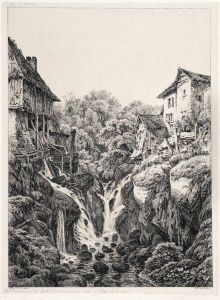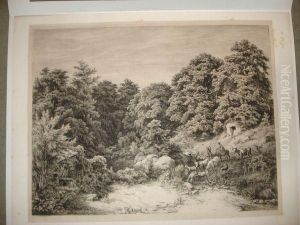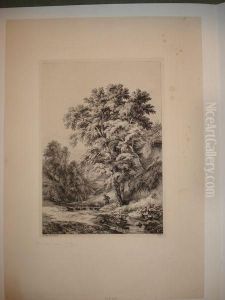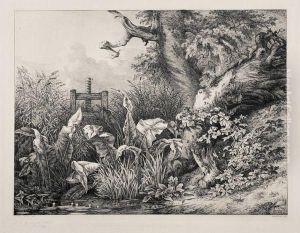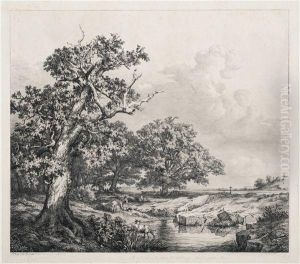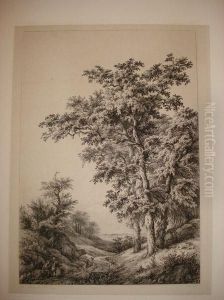Eugene Blery Paintings
Eugène Bléry was a French artist known for his works in the medium of etching. Born on August 19, 1805, in Paris, France, he was initially trained as an engineer but later turned his attention to art. Bléry's passion for etching was evident as he mastered the technique, which involves incising a design onto a metal plate, usually copper, to make prints.
Bléry studied under the tutelage of notable figures such as the painter Jean-Victor Bertin and the engraver Louis Pierre Henriquel-Dupont. During his career, he became renowned for his landscape etchings that often featured the French countryside. His works were characterized by their detailed representation of nature, reflecting a Romantic sensibility that was common among artists of his era.
The artist exhibited his etchings in several Paris Salons, where he received favorable critiques. His ability to capture the nuances of the natural world, from the textures of foliage to the play of light and shadow, was highly appreciated by art connoisseurs and critics alike. Bléry's dedication to his craft led him to be appointed as a Chevalier of the Legion of Honour, one of France's highest distinctions, recognizing his contributions to the arts.
Despite his success, Bléry did not achieve widespread fame during his lifetime, and his works were often overshadowed by those of his contemporaries. Nevertheless, his etchings have gained recognition over time for their technical skill and artistic beauty. They now hold a place in various art collections and museums, preserving his legacy within the history of French printmaking.
Eugène Bléry passed away on December 3, 1887, leaving behind a body of work that continues to be admired by those who appreciate the art of etching and the depiction of the natural landscape. His contributions to the medium have been acknowledged by art historians and collectors, ensuring that his name remains significant in the annals of 19th-century French art.
